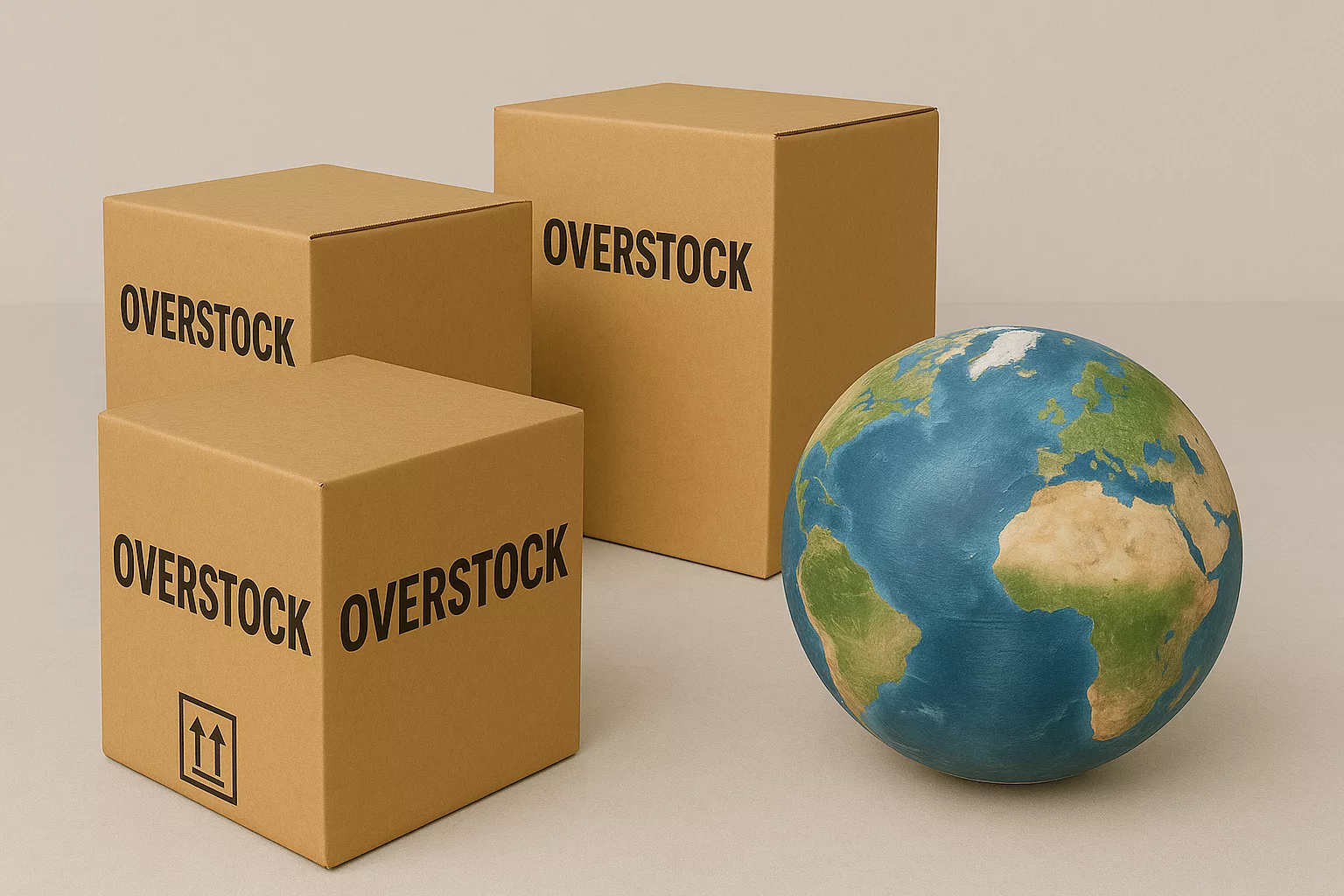When Goods Stand Still, Value Sleeps
In every warehouse around the world, behind locked doors and neatly stacked pallets, lies a silent truth: billions of dollars in unsold goods are waiting for their Clearance chance. These products are not broken, outdated, or irrelevant. They are the victims of forecasts gone wrong, canceled orders, sudden market shifts, or changes in consumer behavior. What was once destined for store shelves in Paris, New York, or Dubai ends up sitting idle, quietly eating into margins.
For suppliers, overstock is more than a nuisance. It is a financial weight that grows heavier every day: warehouse rent, insurance, depreciation, and even environmental costs if disposal becomes the last resort. Yet there is another way to look at this challenge, one that reframes overstock not as a dead end, but as a passport waiting to be stamped.
The True Cost of Dormant Goods
Every supplier knows that stock is money. When goods are sold, they generate revenue. When they sit idle, they quietly drain resources. The longer a product remains unsold, the more it costs in terms of:
- Storage Costs – Rent, utilities, handling fees, and insurance policies that protect inventory.
- Depreciation – Many categories, especially electronics, fashion, and FMCG, lose value rapidly. A smartphone loses 30% of its retail value within six months. A fashion line becomes outdated with the change of a season.
- Taxation and Accounting Burdens – Unsold stock affects balance sheets, increases write-offs, and reduces liquidity.
- Opportunity Cost – Every pallet of dormant goods blocks space for products with higher demand and profit potential.
- Environmental and Legal Risks – In some industries, especially food and pharma, improper disposal of overstock leads to compliance penalties.
But beyond the obvious numbers lies something deeper: brand perception. Suppliers who dump stock carelessly risk seeing their products in the wrong markets, discounted online, or sold without context. That is why many suppliers prefer to destroy unsold goods rather than risk damage to their image.
And yet, destruction is not destiny. Clearance offers a third path: moving goods across borders where they can find a second market, a second life, and a second chance at profitability.
The Clearance Economy: Global in Nature
Clearance is not a local solution. It is by definition a global one. The simple truth is that demand is not uniform across countries. What fails to sell in one market may thrive in another. This divergence in demand creates clearance opportunities.
According to industry research, global overstock is estimated to cost suppliers over $600 billion annually. Yet at the same time, developing markets, discount retailers, and independent shops constantly need access to affordable, high-quality goods. The gap between oversupply and underserved demand is where clearance thrives.
This “clearance economy” is more than just a transaction. It is a hidden ecosystem where suppliers protect brands, buyers access inventory, and goods gain a second passport to reach markets that need them.
Brand Protection Across Borders

One of the greatest fears suppliers have is brand dilution. They worry about products being resold in the wrong places, at the wrong prices, or through channels that damage reputation.
This is where professional clearance companies differentiate themselves. Ozeol, for instance, enforces strict controls:
- Geographic Restrictions – Products are distributed to specific regions that don’t overlap with the supplier’s core markets.
- Confidential Placement – Clearance is discreet, ensuring that the goods don’t appear in mainstream channels where brand equity is at stake.
- Non-Competitive Agreements – Ozeol is a buyer, not a competitor, ensuring neutrality in handling goods.
By offering these protections, suppliers can confidently release stock without fearing backlash. The second market metaphor becomes not just about expanding.
Logistics and Market Knowledge
The clearance journey isn’t just about moving goods. It is about navigating complexity:
- Customs regulations differ from country to country.
- Tariffs and duties can make or break deals.
- Cultural and seasonal demand patterns require careful timing.
- Currency fluctuations affect profitability.
Clearance companies succeed because they combine global logistics networks with local expertise. They understand which markets are ready for specific goods, how to move stock quickly, and how to comply with legal frameworks. For suppliers, this expertise transforms clearance from a risky gamble into a reliable solution.
Sustainability and the Circular Economy
Managing surplus is not just about profit. It is also about responsibility.
Every year, billions of items are destroyed to protect brands or clear warehouses. Fashion burned, electronics scrapped, food dumped. This waste is not just a business issue, it is a global environmental crisis.
Clearance offers an alternative: instead of destruction, redistribution. By giving goods a second passport, suppliers contribute to the circular economy, extending product lifecycles and reducing waste. In doing so, they align with global sustainability goals while maintaining profitability.
For many suppliers, this is becoming a strategic advantage. Buyers and consumers increasingly expect brands to act responsibly. Clearance is not only the right choice; it is the smart choice.
Technology and Data in Modern Clearance
Today’s clearance industry is evolving through technology:
- Predictive Analytics forecast which goods will be in demand in which markets.
- AI-powered platforms match suppliers with buyers instantly.
- Digital marketplaces enable global connections with unprecedented speed.
For suppliers, this means clearance is no longer a slow, uncertain process. It is data-driven, targeted, and fast. A canceled order in Europe can be flagged for buyers in Africa within days. What once took months now takes hours.
The Future of Global Clearance
Looking ahead, clearance will become an even more vital part of global trade. Several trends will drive this shift:
- Rising Supply Chain Volatility – As global disruptions increase, overstock will remain inevitable.
- Sustainability Pressures – Regulators and consumers alike will push against waste. Clearance offers compliance and credibility.
- Digital Acceleration – Clearance platforms will function like global stock exchanges, trading surplus with transparency.
- New Market Growth – Emerging economies will continue to demand affordable branded goods.
The future is clear: goods will keep moving, and clearance will become a mainstream strategic tool, not a last resort.
Overstock is not failure. It is not shame. It is simply a product waiting for its second chance. By giving goods a second passport, suppliers transform waste into value, risk into opportunity, and stagnation into global movement.
The clearance economy is proof that goods don’t die when markets change; they just move.
Your overstock deserves more than a warehouse. It deserves a journey. It deserves a second Market.

